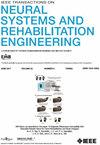On the Benefit of FMG and EMG Sensor Fusion for Gesture Recognition Using Cross-Subject Validation
IF 4.8
2区 医学
Q2 ENGINEERING, BIOMEDICAL
IEEE Transactions on Neural Systems and Rehabilitation Engineering
Pub Date : 2025-02-19
DOI:10.1109/TNSRE.2025.3543649
引用次数: 0
Abstract
Hand gestures are a natural form of human communication, making gesture recognition a sensible approach for intuitive human-computer interaction. Wearable sensors on the forearm can be used to detect the muscle contractions that generate these gestures, but classification approaches relying on a single measured modality lack accuracy and robustness. In this work, we analyze sensor fusion of force myography (FMG) and electromyography (EMG) for gesture recognition. We employ piezoelectric FMG sensors based on ferroelectrets and a commercial EMG system in a user study with 13 participants to measure 66 distinct hand movements with 10ms labelling precision. Three classification tasks, namely flexion and extension, single finger, and all finger movement classification, are performed using common handcrafted features as input to machine learning classifiers. Subsequently, the evaluation covers the effectiveness of the sensor fusion using correlation analysis, classification performance based on leave-one-subject-out-cross-validation and 5x2cv-t-tests, and its effects of involuntary movements on classification. We find that sensor fusion leads to significant improvement (42% higher average recognition accuracy) on all three tasks and that both sensor modalities contain complementary information. Furthermore, we confirm this finding using reduced FMG and EMG sensor sets. This study reinforces the results of prior research about the effectiveness of sensor fusion by performing meticulous statistical analyses, thereby paving the way for multi-sensor gesture recognition in assistance systems.FMG和EMG传感器融合在手势识别中的应用
手势是人类交流的一种自然形式,使手势识别成为直观人机交互的一种合理方法。前臂上的可穿戴传感器可用于检测产生这些手势的肌肉收缩,但依赖于单一测量模态的分类方法缺乏准确性和鲁棒性。在这项工作中,我们分析了用于手势识别的力肌图(FMG)和肌电图(EMG)传感器融合。在一项有13名参与者的用户研究中,我们使用基于铁电极体的压电FMG传感器和商业肌电图系统来测量66种不同的手部运动,标记精度为10ms。三个分类任务,即屈伸、单指和所有手指运动分类,使用常见的手工特征作为机器学习分类器的输入来执行。随后,评估了使用相关分析的传感器融合的有效性,基于离开一个被试的交叉验证和5x2cv-t检验的分类性能,以及不自主运动对分类的影响。我们发现传感器融合在所有三个任务上都有显著的改进(平均识别精度提高42%),并且两种传感器模式都包含互补的信息。此外,我们使用减少的FMG和EMG传感器集证实了这一发现。本研究通过进行细致的统计分析,加强了先前关于传感器融合有效性的研究结果,从而为辅助系统中的多传感器手势识别铺平了道路。
本文章由计算机程序翻译,如有差异,请以英文原文为准。
求助全文
约1分钟内获得全文
求助全文
来源期刊
CiteScore
8.60
自引率
8.20%
发文量
479
审稿时长
6-12 weeks
期刊介绍:
Rehabilitative and neural aspects of biomedical engineering, including functional electrical stimulation, acoustic dynamics, human performance measurement and analysis, nerve stimulation, electromyography, motor control and stimulation; and hardware and software applications for rehabilitation engineering and assistive devices.

 求助内容:
求助内容: 应助结果提醒方式:
应助结果提醒方式:


